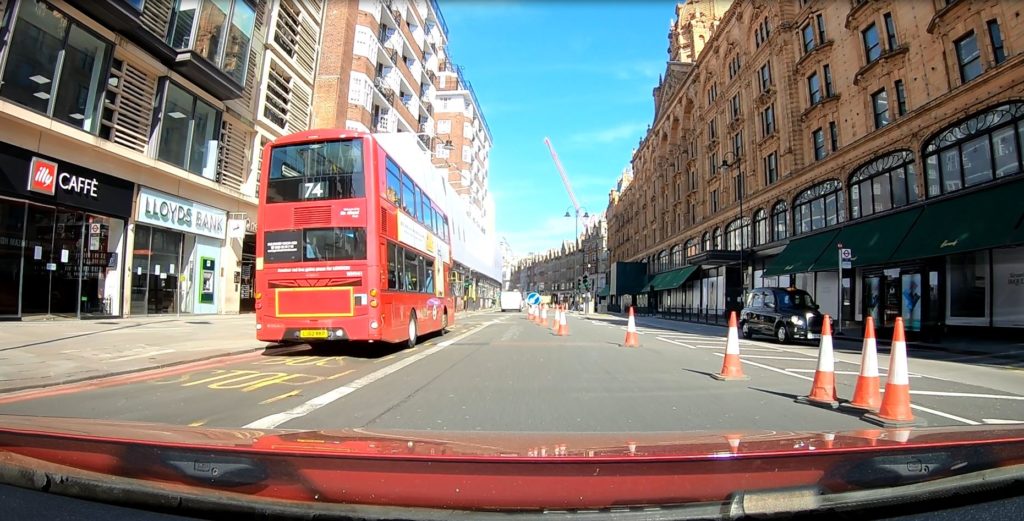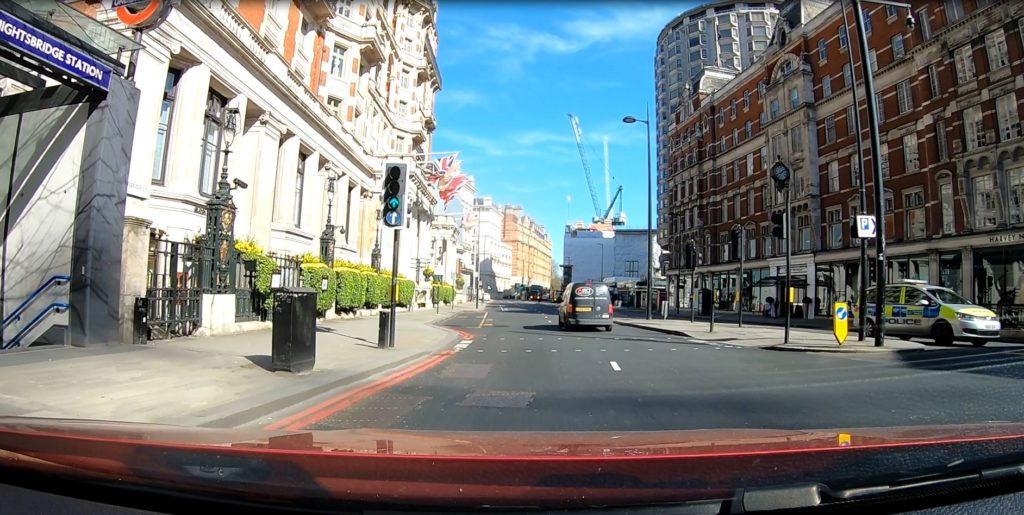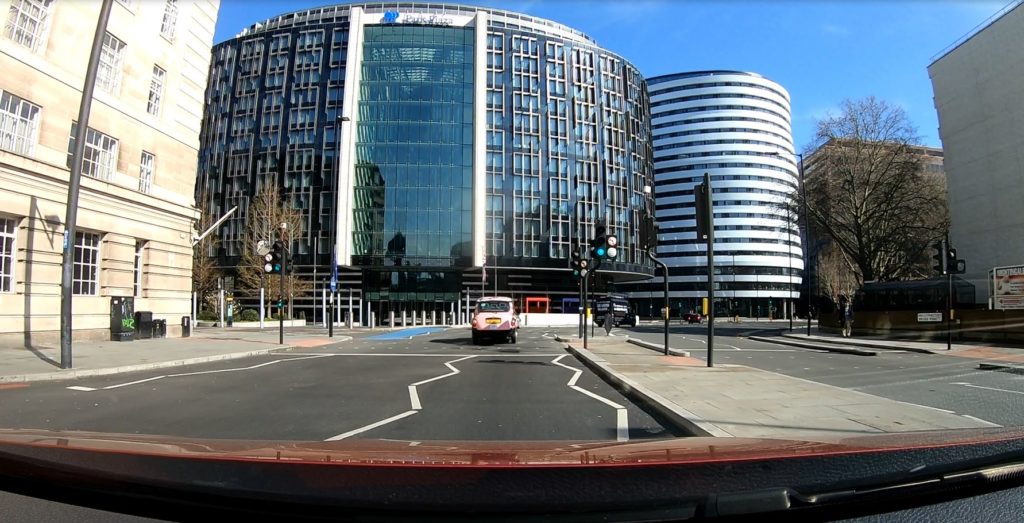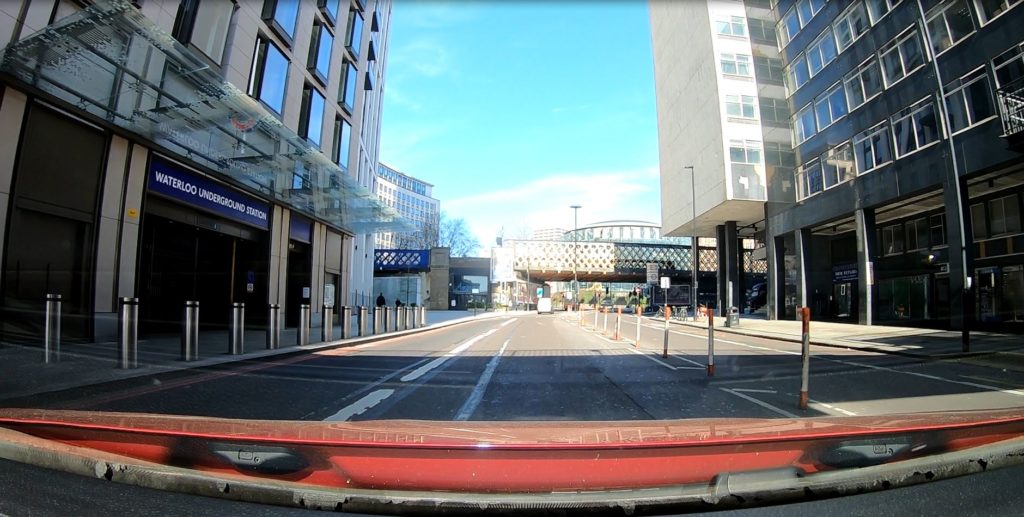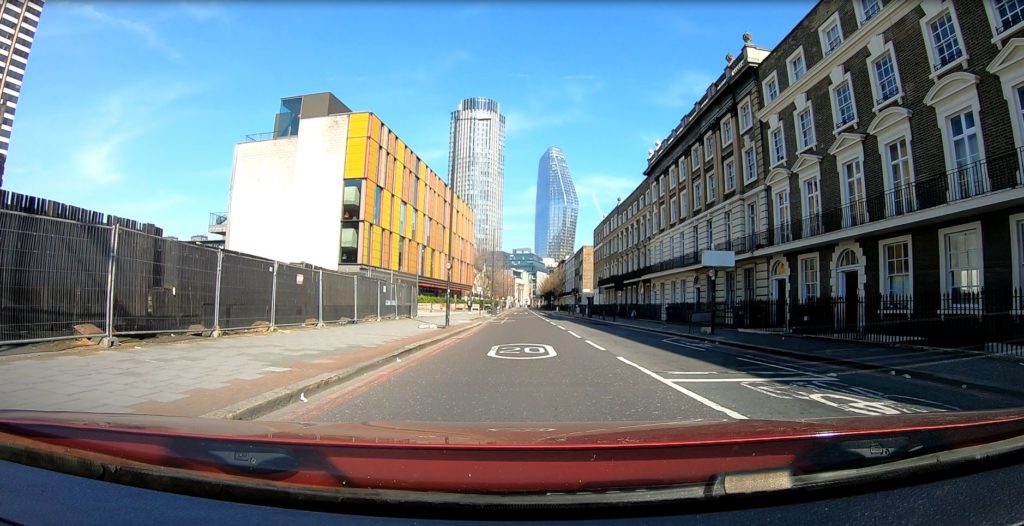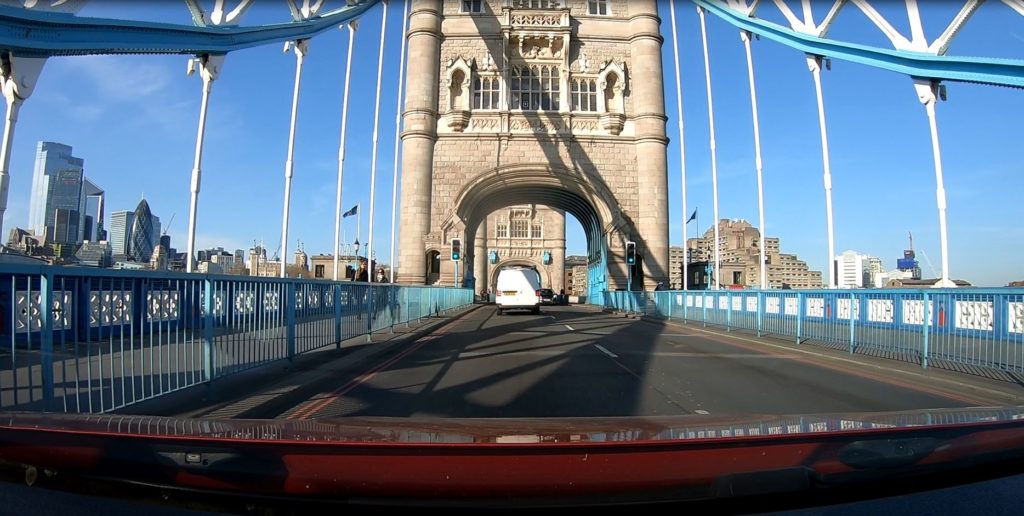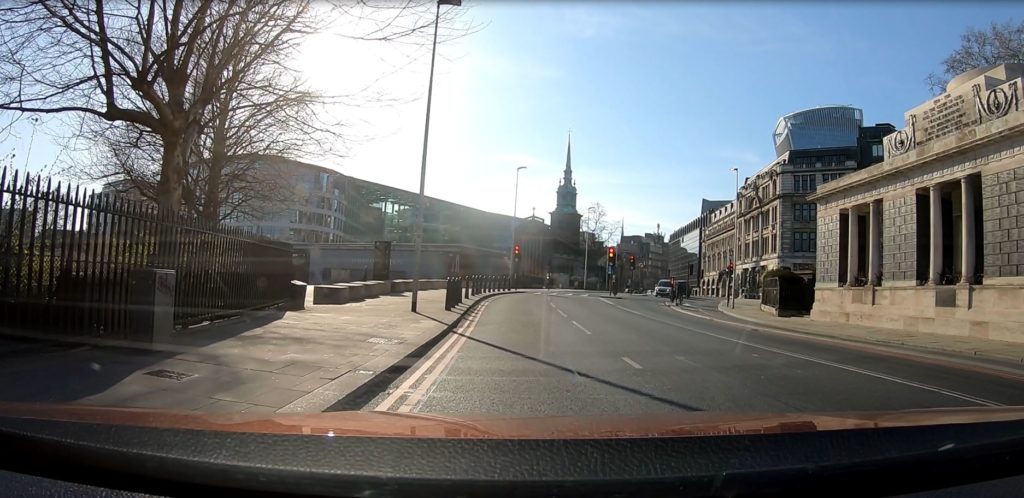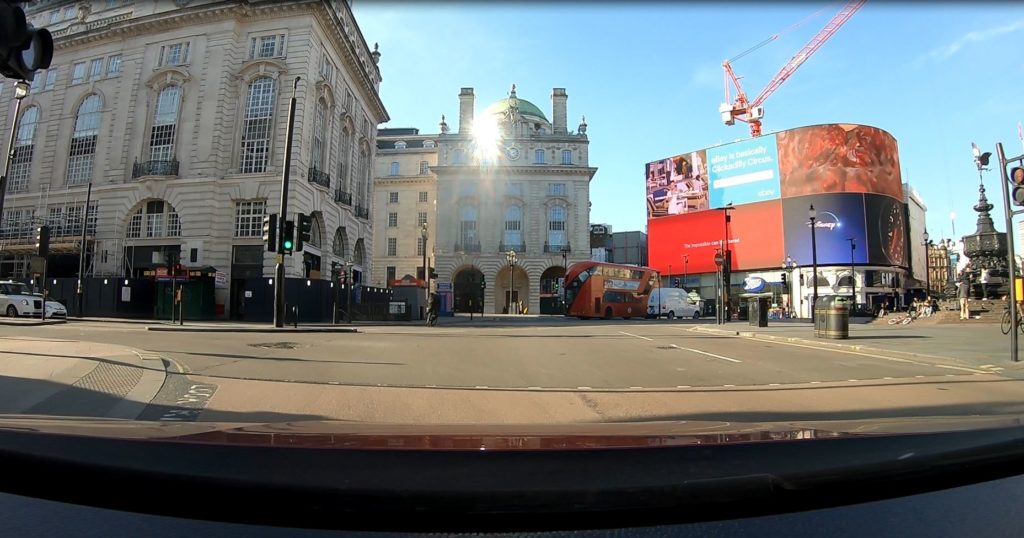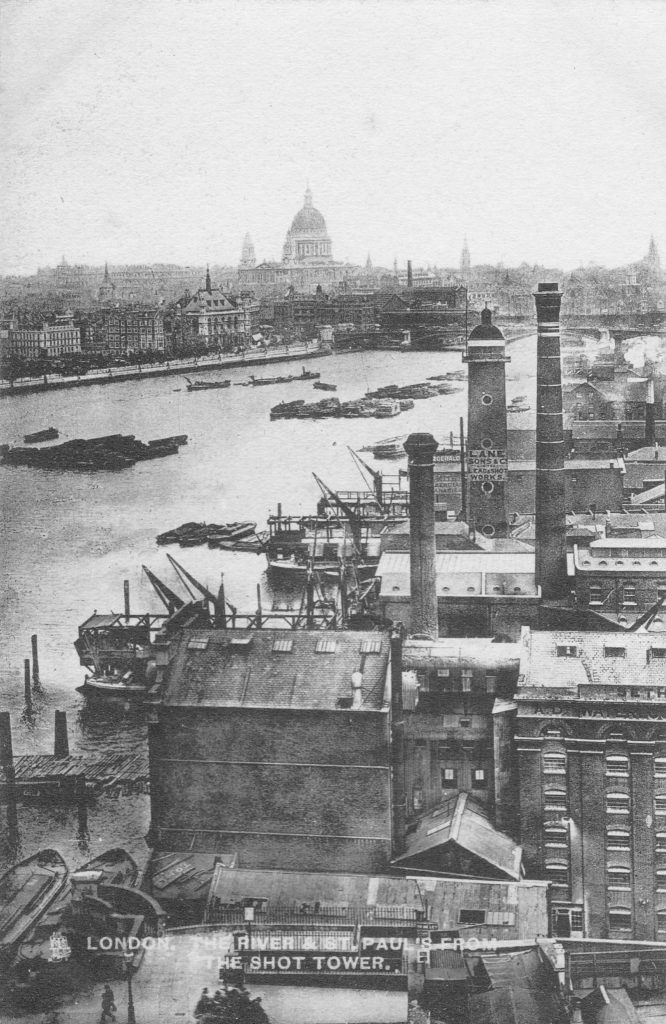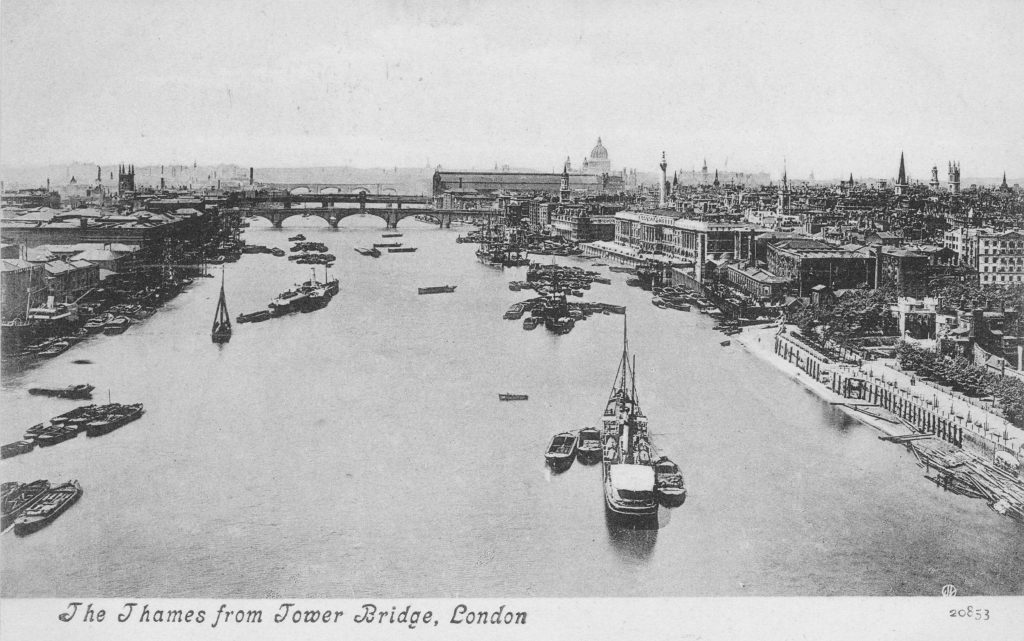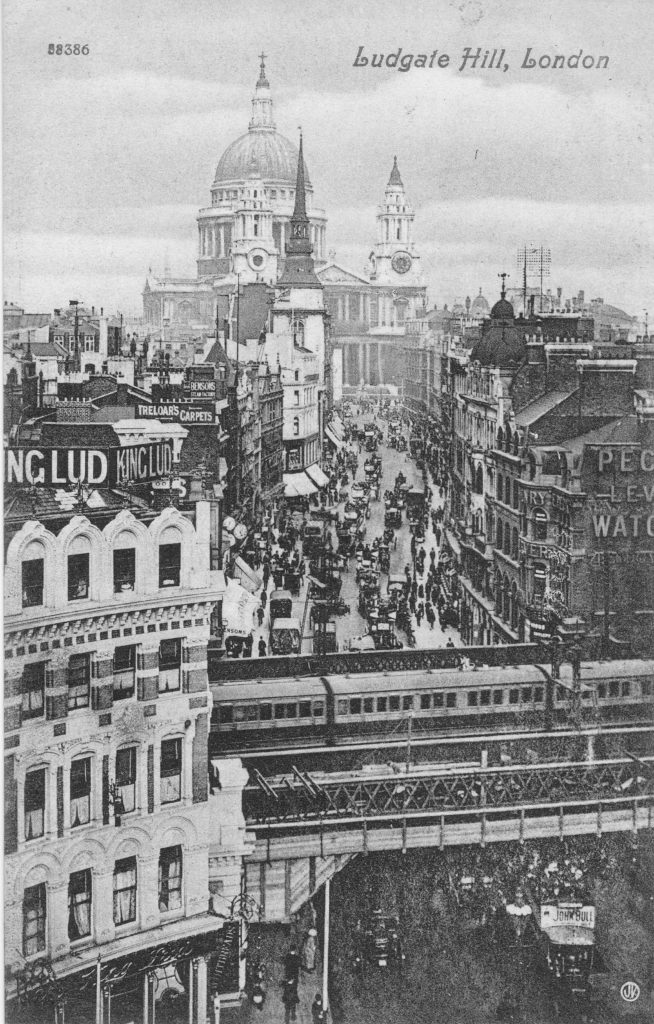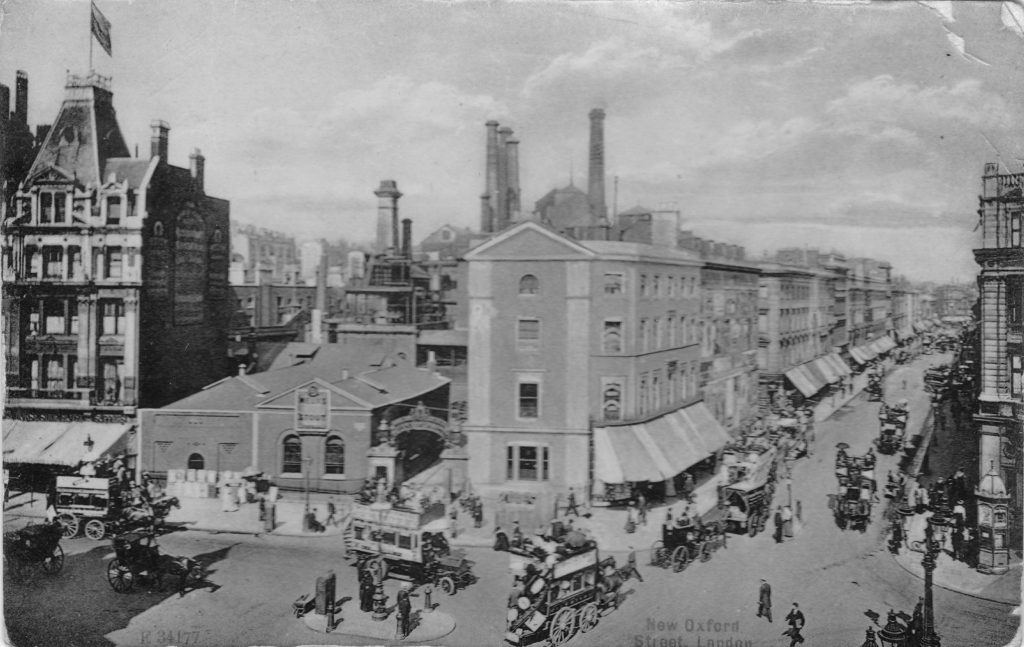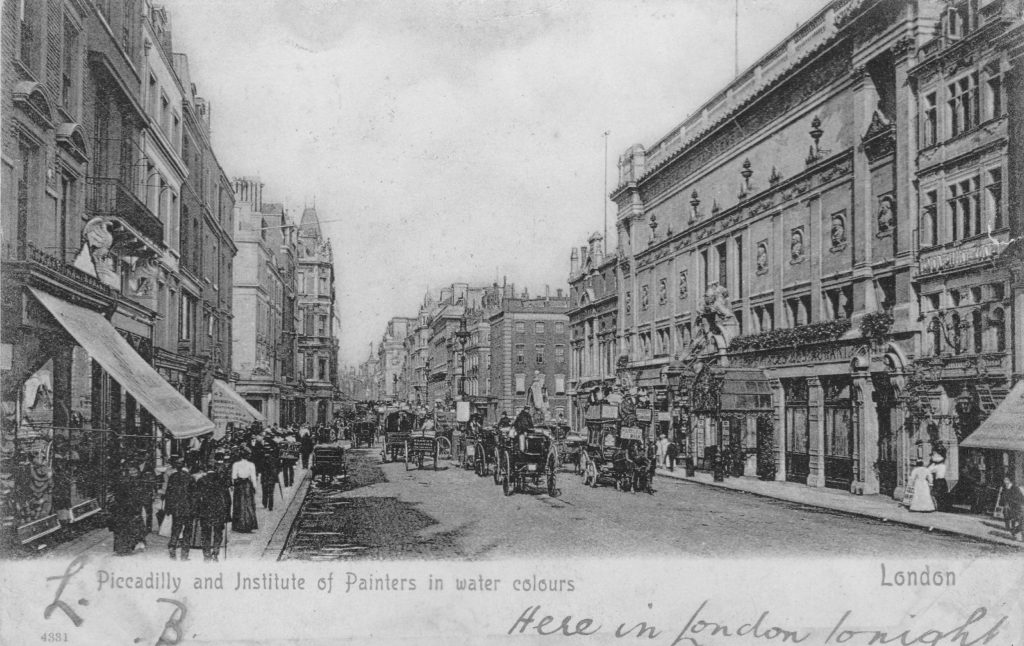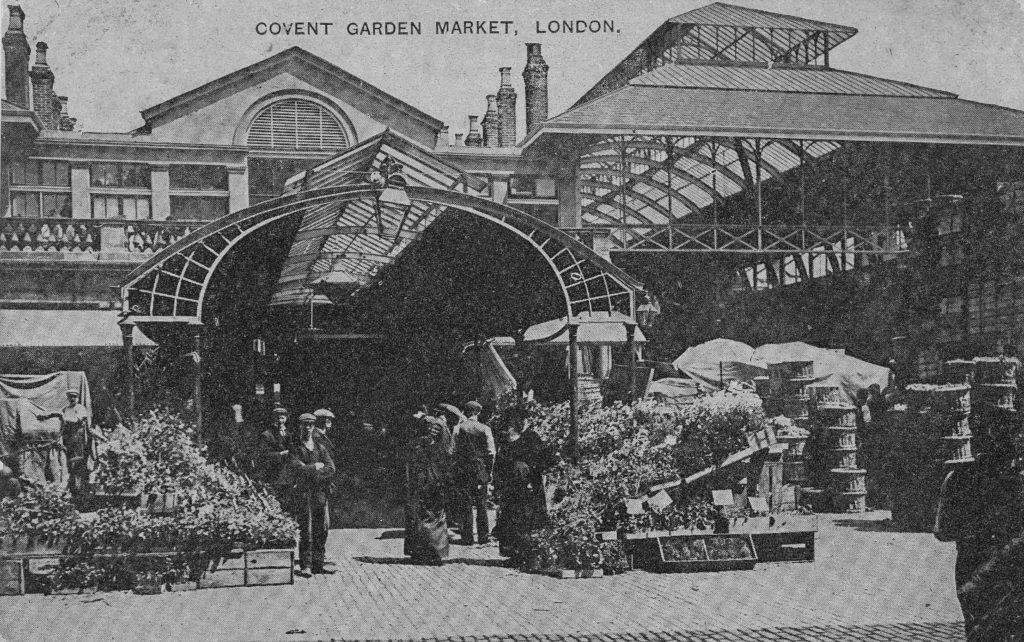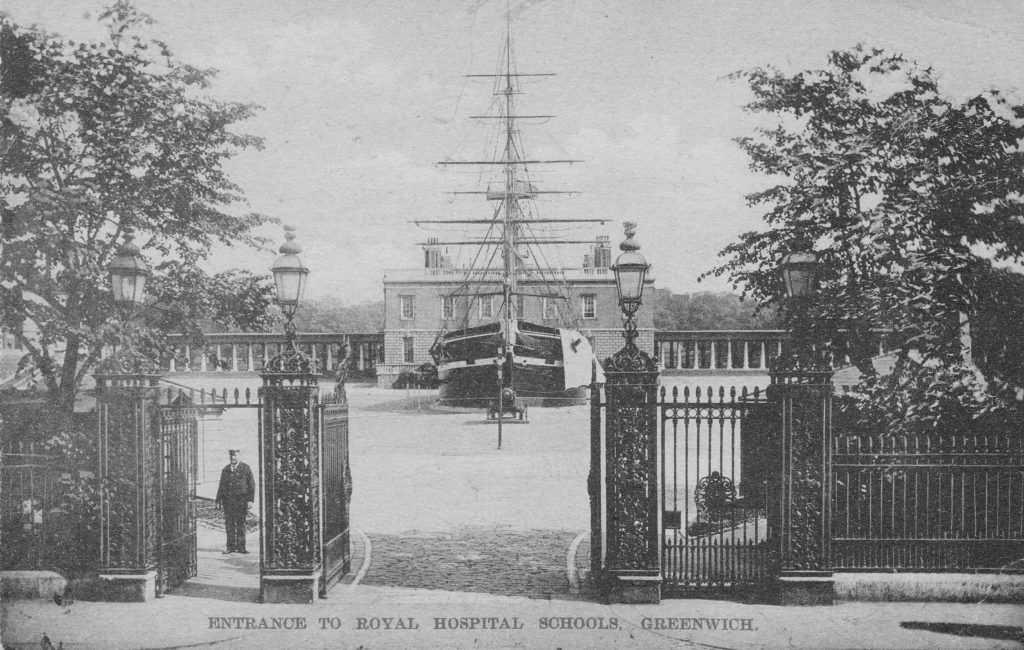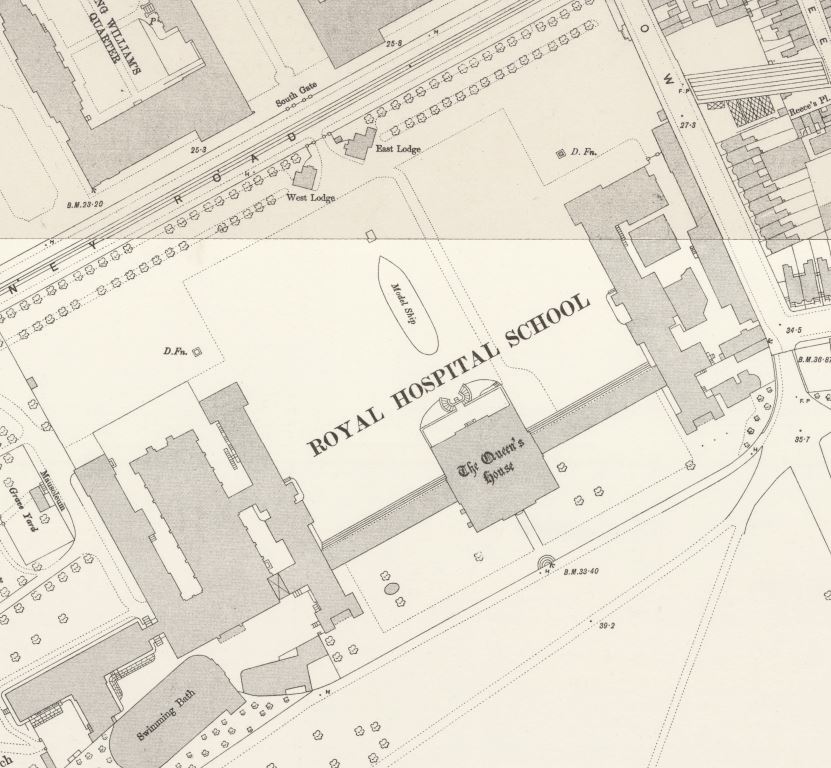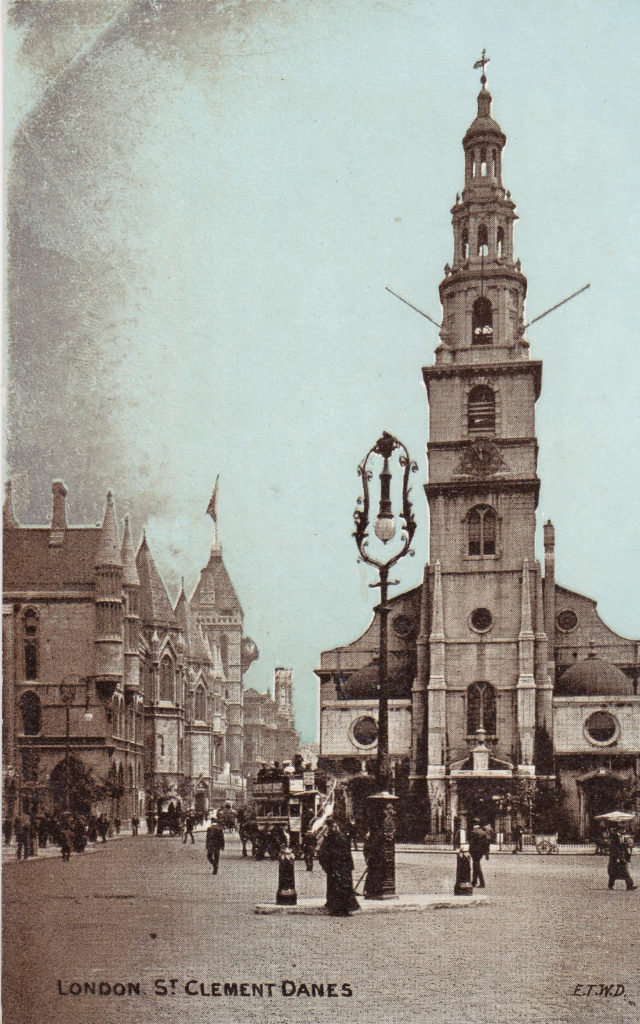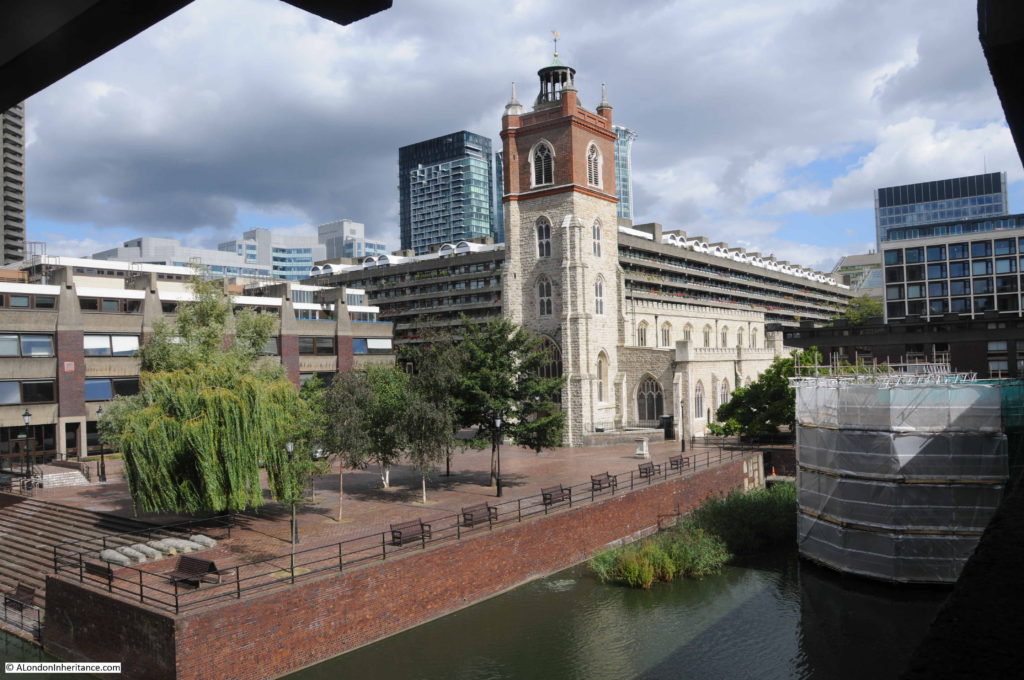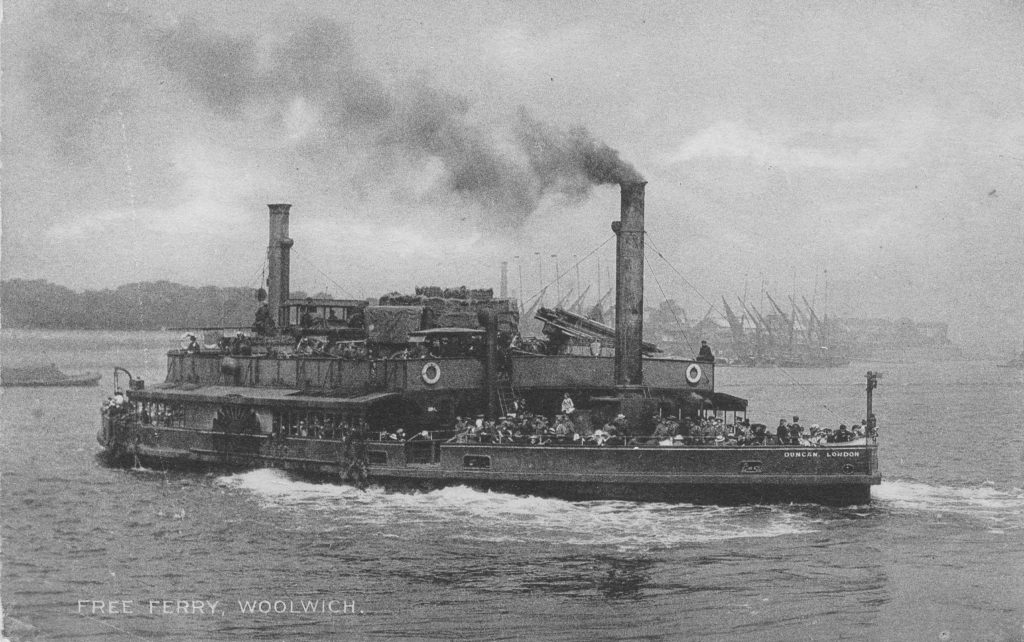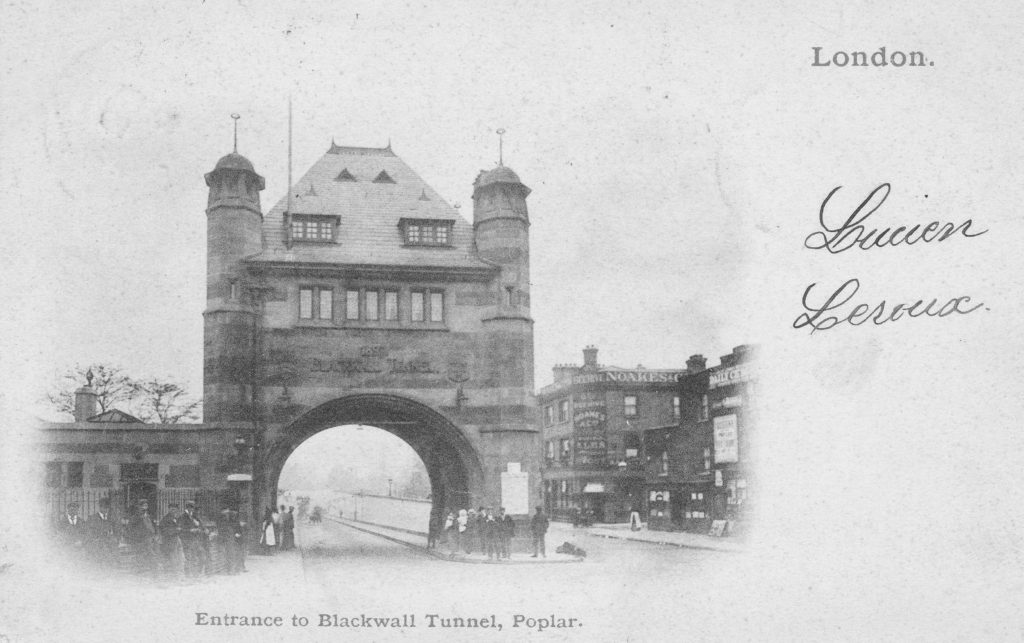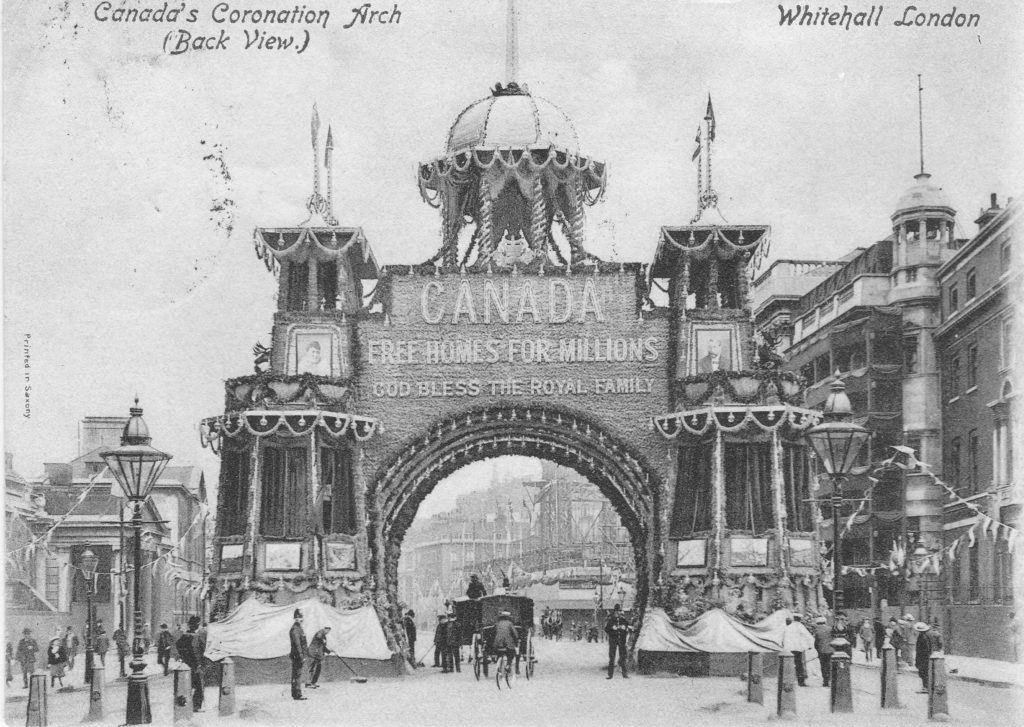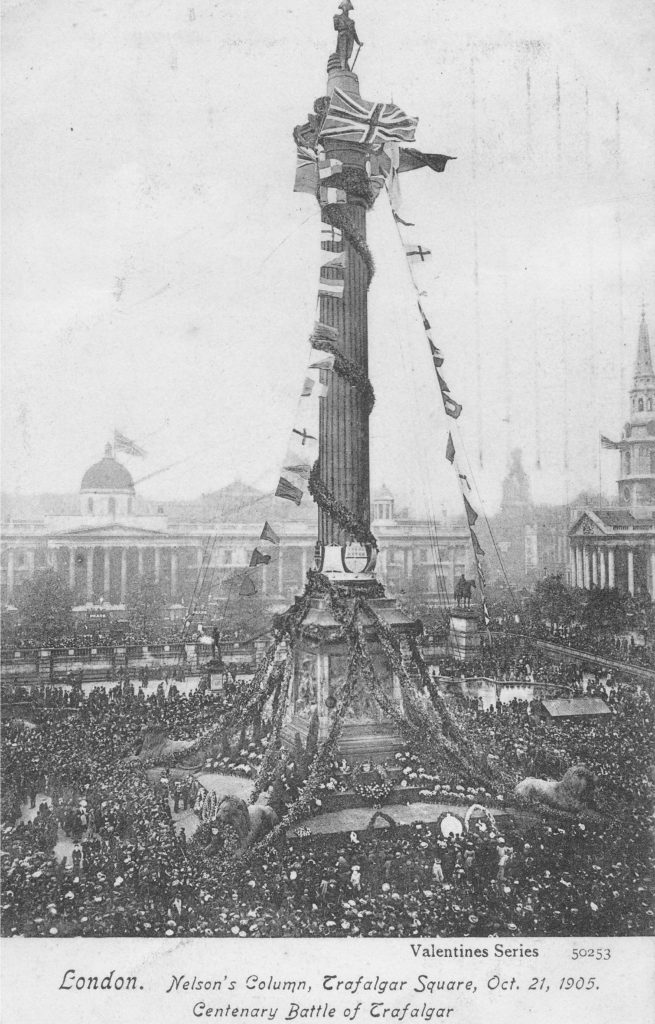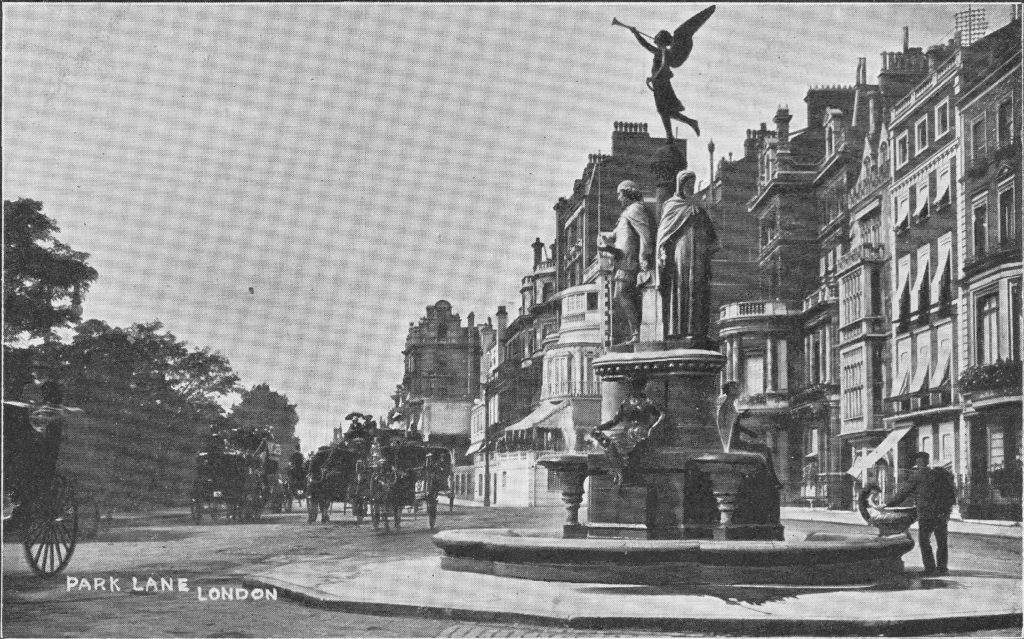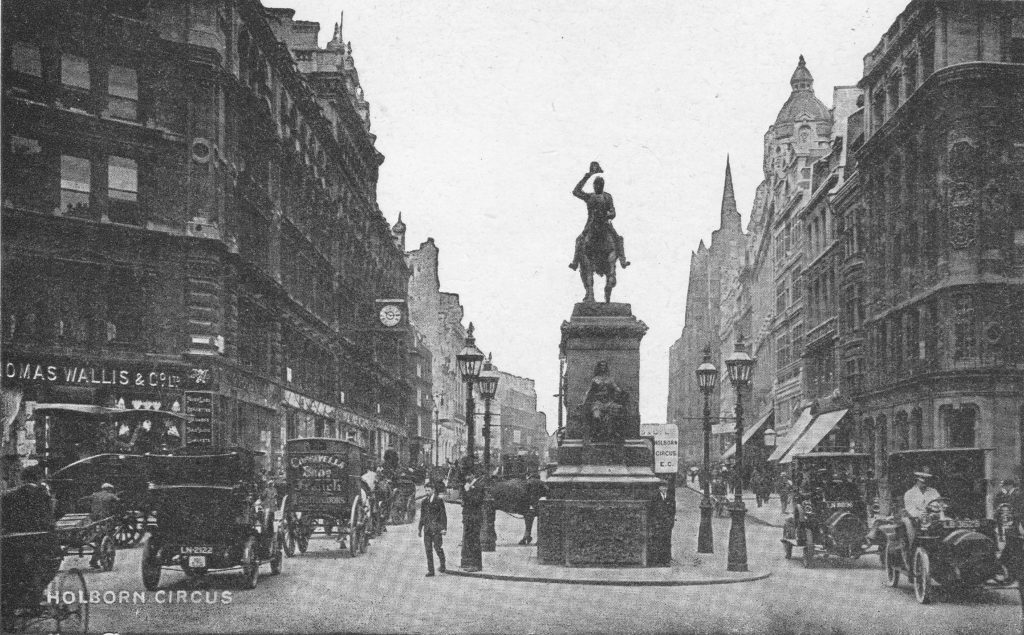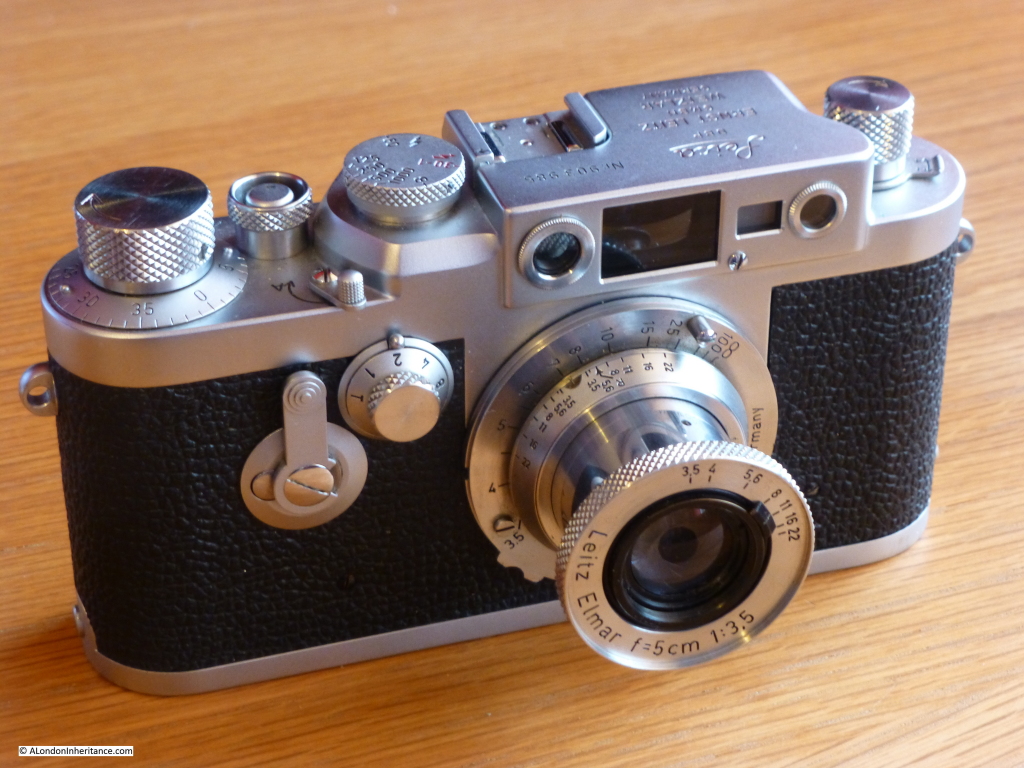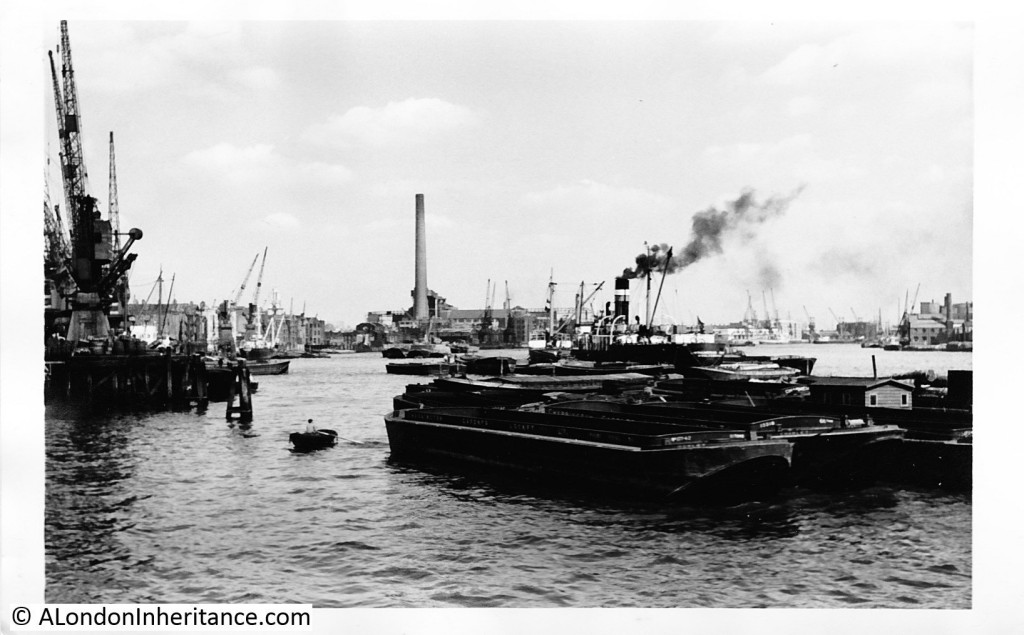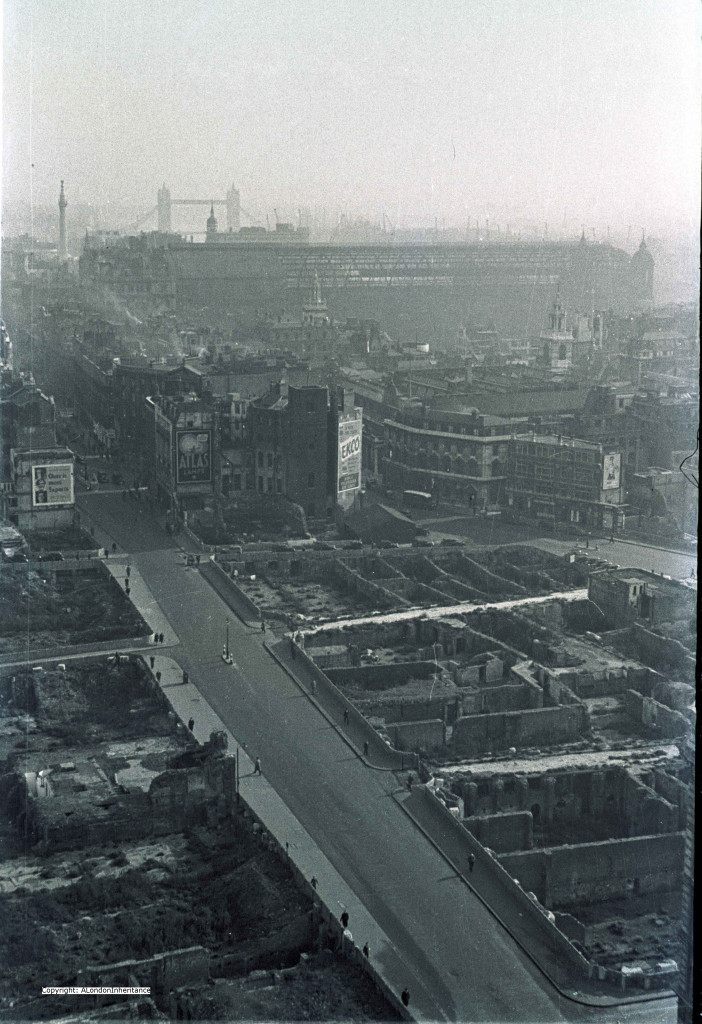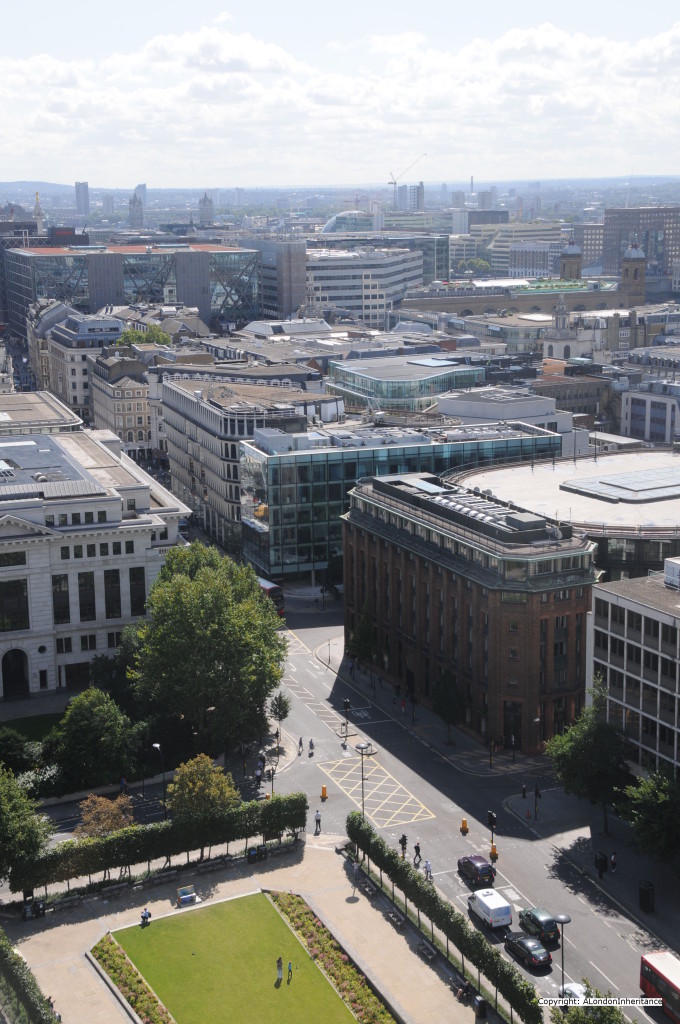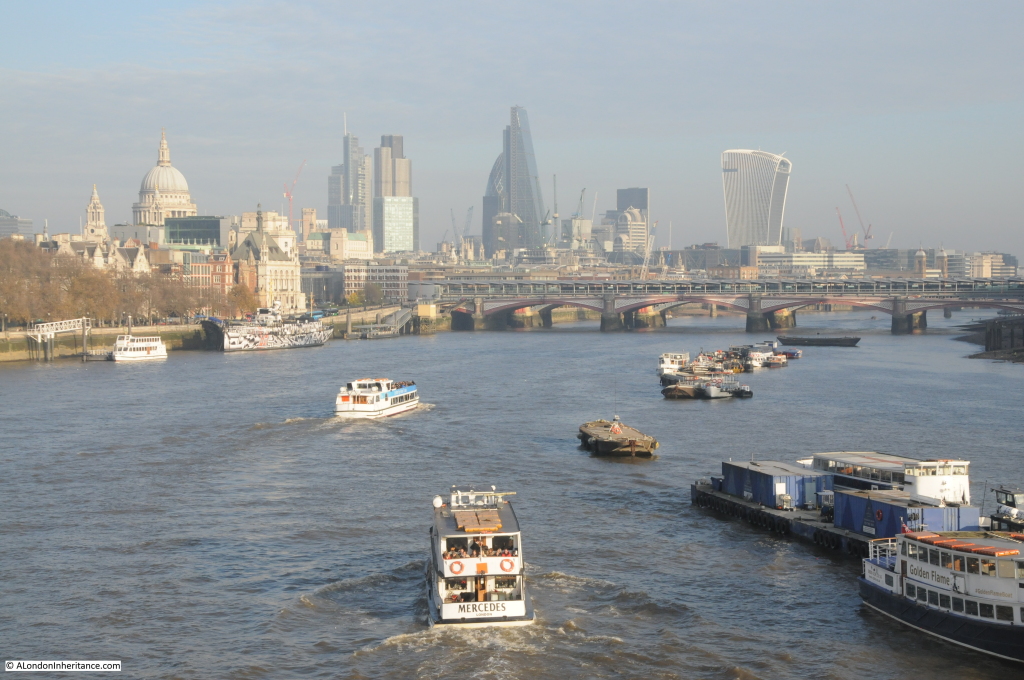I have been collecting books about London for many years, my first purchase was in the mid 1970s in a second-hand bookshop in one of the alleys leading into Greenwich Market. It was H.V. Morton’s London, first published in 1940, a collection of three individual books published in the 1920s. H.V. Morton was a journalist and his writing about London was probably embellished somewhat, but at the time it seemed to bring alive the history and romance of London.
I recently bought a remarkable 3 volume set – Wonderful London, published in the late 1920s. It was edited by St. John Adcock (a prolific author and poet who lived in Hampstead and died in 1930) and described as “The World’s Greatest City Described by its Best Writers and Pictured by its Finest Photographers”.
Wonderful London has chapters on all aspects of the city, each written by a different author, for example “How London Strikes A Provincial” by J.B. Priestley, “The Case For Old London” by G.K. Chesterton and “Sunday In Town” by H.V. Morton.
The three volumes run to over 1100 pages and 1200 photos and provides a fantastic snapshot of London in the 1920s with the text highlighting the social attitudes of the time.
As I scanned through the book, many of the photos are of the same scenes that my father took in the late 1940s and early 1950s and which I have been photographing over the years. There are also some remarkable photos showing London in the first decades of the 20th century and for this week’s post, let me bring you a sample of photos from Wonderful London.
To start, the first photo is a fantastic aerial view of Wembley Stadium. the title to the photo is “Ants Nest Carelessly Broken Open Or Wembley Stadium Seen From The Cockpit Of An Aeroplane”. The caption to the photo reads:
“When at the end of 1925, after two years of stucco splendour, the pavilions and palaces of the British Empire Exhibition melted beneath the workmen’s hands, one building, as though in irony remained, the Wembley Stadium, solid-built as the shrine of professional football. It is symptomatic boast that the Stadium exceeds the Colosseum in size by one-half. During the period of the Exhibition the arena was used for various pageants and military displays, but it is not on record that they ever drew a crowd nearly as dense as the one on which we are gazing.”
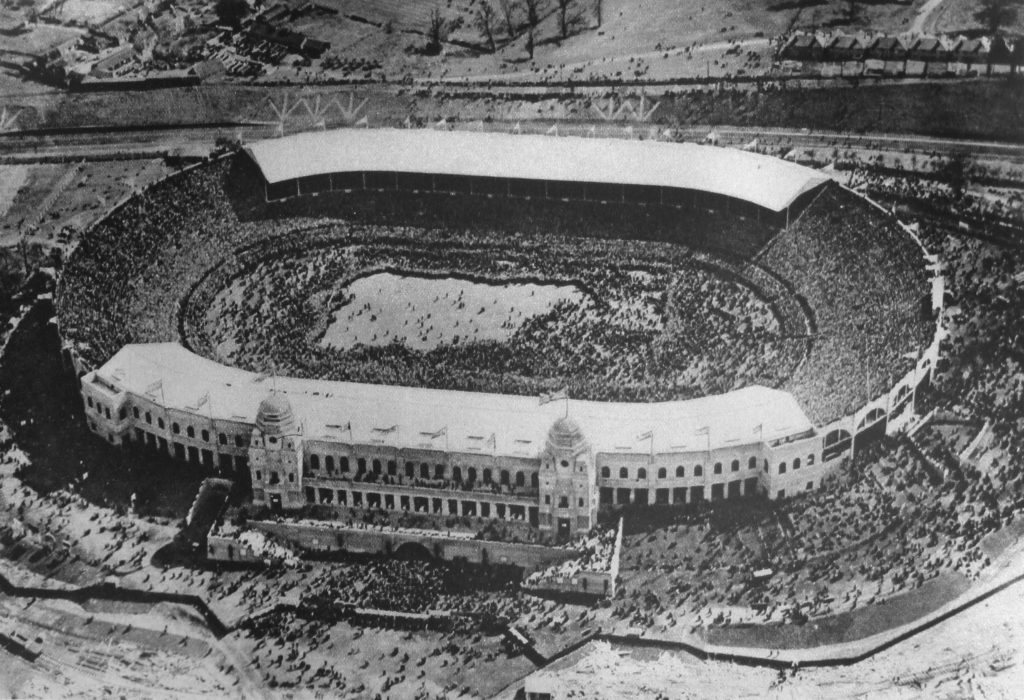
Continuing on the football theme, the following photo is titled “Street Hawkers Sell Football Favours At Walham Green” and has the caption:
“At Walham Green coloured favours and match programmes are for sale near Stamford Bridge, the ground of the Chelsea Football Club.”

Walham Green is a name that is rarely heard today. Originally the name of a village in west London, dating back to at least 1383 when it was known as Wandongrene. As the above reference to Chelsea Football Club suggests, it was integrated into Chelsea and Fulham. The underground station on the District Line that is now called Fulham Broadway was originally called Walham Green. See the following scan from a 1937 underground map. The name changed to Fulham Broadway in 1952.

Last year I published a couple of posts on the Caledonian Market, including climbing the Clock Tower which can be found here and here. Wonderful London includes a few photos of the market, including the following photo showing an overview of the market in action. The clock tower is still there, but the surroundings are now completely different.
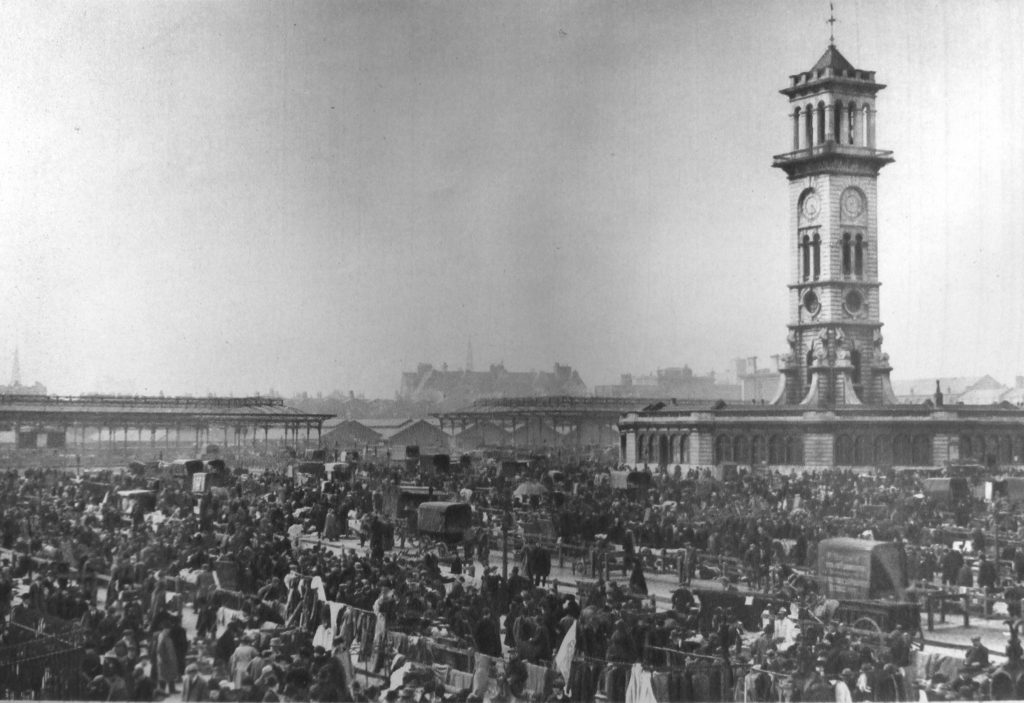
As well as the main cattle market, the Caledonian Market area was also the site of a Friday “pedlars’ market” where is was possible to buy almost anything. The following photo shows the sale of poultry at the pedlars market.

A couple of months ago, I published a photo my father took after the war of the ruins of Chelsea Old Church. In frount of this photo there is a cart with a few children. The cart appears to be an ice cream cart. In Wonderful London there is the photo below of a similar scene with the title “A Son Of Italy Does A Brisk Trade In Frozen Something-Or-Other.”
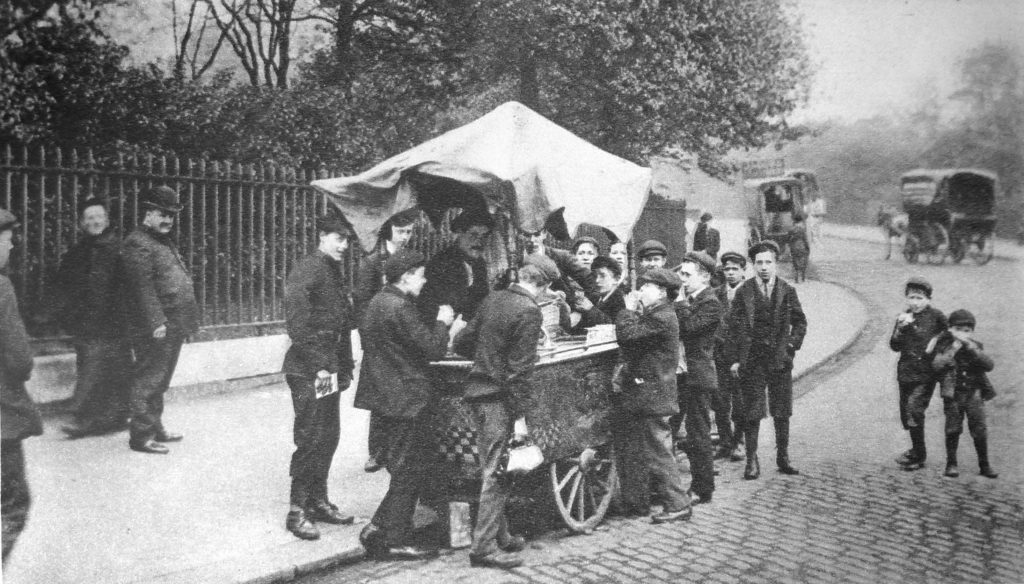
At the end of last year, I went on the Massey Shaw Fireboat as it traveled along the Thames to demonstrate how river based firefighting was carried out. Wonderful London includes the following photo of a huge warehouse fire at Millwall with “thousands of tons of rubber are burning here besides large quantities of tallow and carpets”, being fought by fireboats on the river.
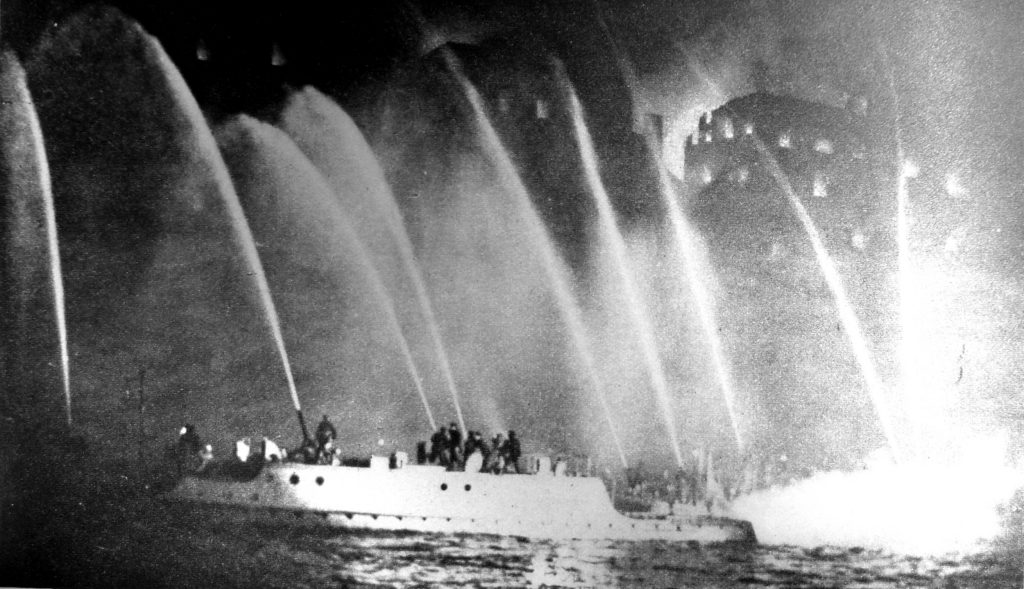
Wonderful London includes a couple of full-page spreads showing views along the Thames. The following photo shows the original Waterloo Bridge from the top of the Savoy Hotel and is titled “Before Evil Days Fell Upon Waterloo Bridge After A Century Of London Traffic.” The caption reads:
“This is a last look at the old bridge as it was before two of its arches failed and began to take up that bent and disquieting appearance which caused the steel auxiliary to be built, the old bridge shored up and so much ink spilt about it.”

Another of the panorama photos is the following photo taken from the roof of Bush House. The photo is looking towards the South Bank and shows the Shot Tower and the industrial area on the South Bank prior to the post war redevelopment leading to the Festival of Britain.

It is interesting that London has always been the subject of “before and after photos”, which is also one of my aims for this blog, to take photos today of the locations my father photographed in the 1940s/50s. Wonderful London includes a number of examples, including the following two photos taken from the same position in the Strand. The first photo shows the original Temple Bar city boundary in 1878. The second photo shows exactly the same scene in the 1920s following removal of Temple Bar, widening of the street and new buildings on either side of the Strand. The location can be confirmed by building number 229 which is on the right of both photos.

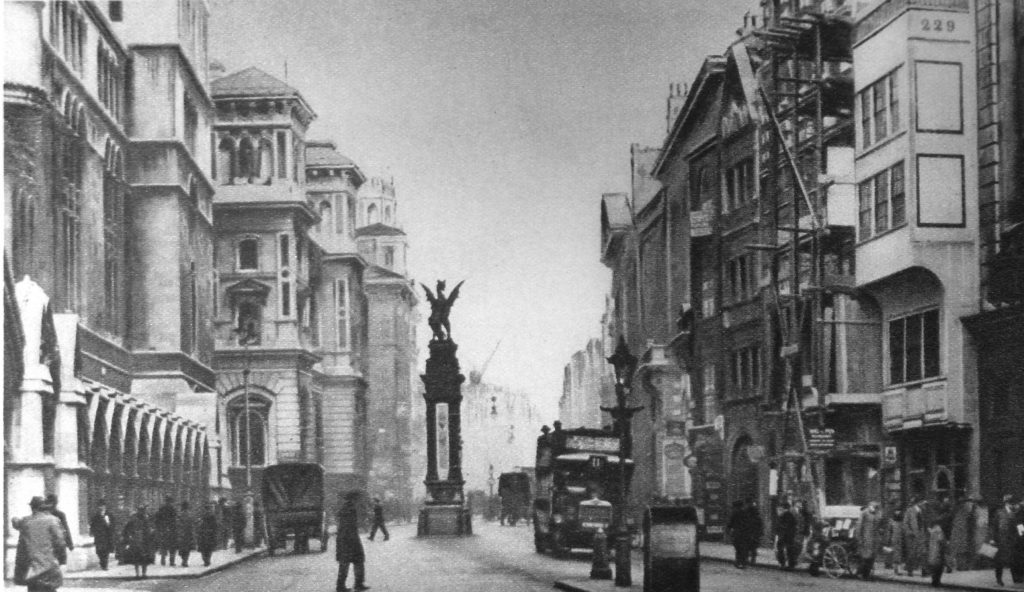
Wonderful London features a range of photos of London children, including the two photos below which are titled “A Budding Humorist Of The East-End And The Serpentine Smile”. the caption for both photos reads:
“A water-tank covered by a plank in a back-yard among the slums is an unlikely place for a stage, but an undaunted admirer of that great Cockney humorist, Charlie Chaplin, is holding his audience with an imitation of the well-known gestures with which the comic actor indicates the care-free-though-down-and-out view of life which he has immortalised on the screen. Below is a group of summer paddlers in the Serpentine. On the extreme left is a boy holding the shafts of the inevitable sugar-box cart fixed on perambulator wheels.”


In last week’s post I featured photos my father had taken from the river looking at the north bank of the river. One of these photos had the shell of the church of Allhallows by the Tower which had suffered severe bomb damage during the war. Wonderful London includes the following photo of the church in the 1920s, looking south. The buildings behind the church to the right are between the church and the river. The majority of the surrounding buildings would also be destroyed by bombing in just over 10 years following the decade when this photo was taken.

Photos of views along the river with many of the earlier bridges are included. The following photo shows the view from the Adelphi Terrace looking eastward along the river. The bridge is the original Waterloo Bridge that crossed the river before the version of the bridge in place today, and was photographed after the failures mentioned in the earlier photo. The bridge has the “steel auxiliary” also mentioned above.

The markets of London feature in Wonderful London. Here is Covent Garden, with the title “Early Morning In The Convent Garden Which Has become Covent Garden” and the caption reads:
“It seems that the Convent Garden of Westminster stretched along the north side of the Strand between Drury Lane and St. Martin-in-the-Fields. When Henry VIII made his pounce upon the monasteries and flung the pieces to his followers, the Russell family got the garden and built themselves Bedford House on the south side. They caused Inigo Jones to lay out a piazza on the north and east and a church on the west. Stalls for selling fruit and vegetables were already established. In 1704 the Russells (or Bedfords) moved to Bloomsbury, and in 1830 most of the current buildings were put up. Soon after midnight the carts start their journeys from the market gardens beyond outer London to reach Covent Garden in time.”

Another London market is Billingsgate Market and the photo in Wonderful London below of the streets outside the market is taken from roughly the same location as one my father had taken (see here). The photo is titled “Fish-Porters Of Billingsgate Gathered About Consignments Lately Arrived From The Coast” and the caption reads:
“At Billingsgate is the chief fish market of London. and to it are brought all kinds of fish from aristocratic salmon and oysters to democratic shrimps and dog-fish of rock salmon. At one time smacks brought all the fish sold in the market, and were unloaded at Billingsgate Wharf, which is said to be the oldest in London. Today however, most comes by train, and little by boat. The daily market is always crowded, and business is conducted at a speed extremely confusing to the casual spectator. Here we may see the fish porters, who have an almost legendary reputation for bad language, handling the slippery loads with the precision of experts. In the background of this view, to the right, is seen the monument.”

One of the ancient customs covered by Wonderful London is Swan Upping. A custom which my father photographed, as did I during the 2015 event. My post can be found here. Photos of the event in the 1920s look almost identical to the event of today.
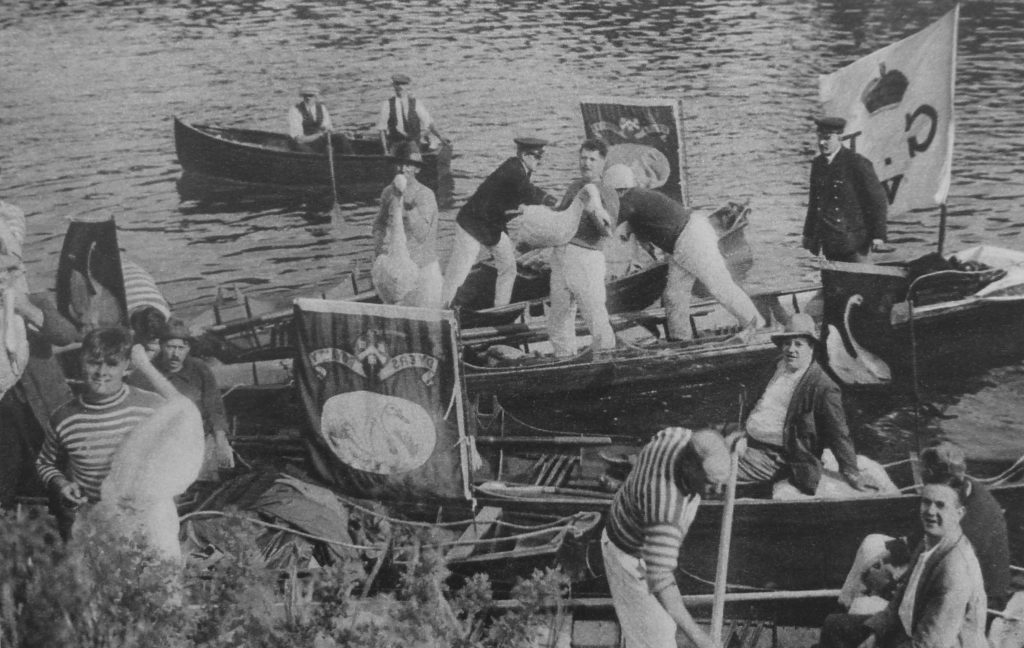
Among photos of Londoners and their trades is the following of “old cabbies headed by an ancient who claims that he once drove King Edward when Prince of Wales, from Waterloo to Marlborough House, in 1868.” You probably would not want to question the route taken by these cabbies!
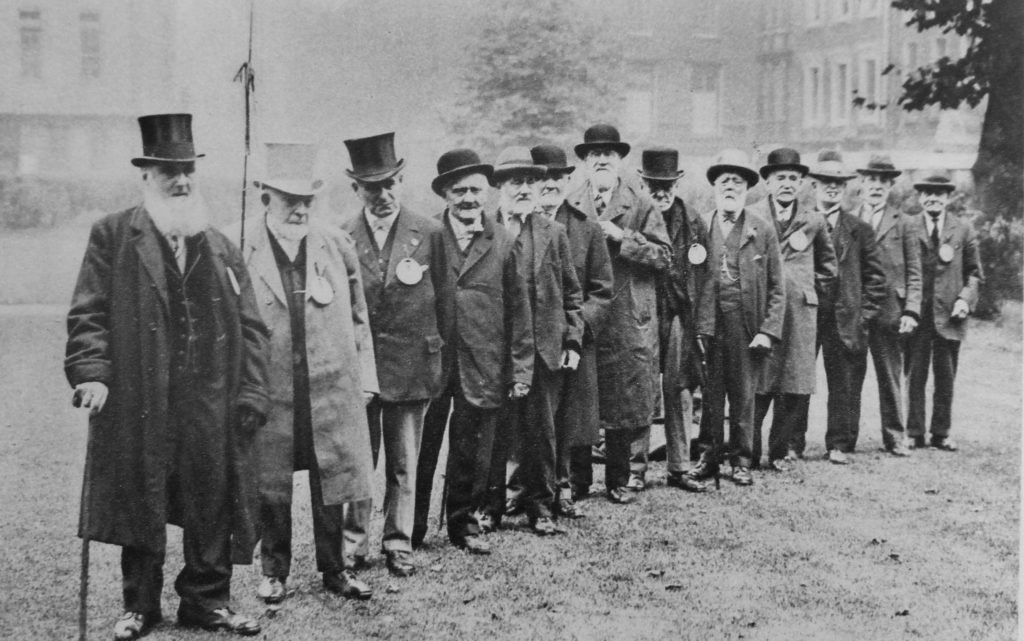
A chapter in Wonderful London covers Social Work, but a very different form of Social Work to that we understand today. Provided to Londoners through a range of organisations such as the Salvation Army, Police Court Missionaries, Dr. Barnardo’s, the Watercress and Flower Girls’ Christian Mission, St. Dunstan’s, the Morning Post Home for Destitute Men, a Medical Mission for ailing working women and children and the YMCA.
The following photo has the title: “Little Citizens Of London Who Ask For A Change In Life” and is captioned:
“There is no more important branch of social work in great cities than amelioration of the slum child’s lot. The public conscience is difficult to stir, but much is nevertheless being done by philanthropical societies and by individual effort to brighten the drab lives of these little unfortunates, to rescue them from surroundings of cruelty or crime and to start them upon happy and useful careers. Many east-end children have never been beyond their own disease-ridden courts and the dingy streets that form their playground.”
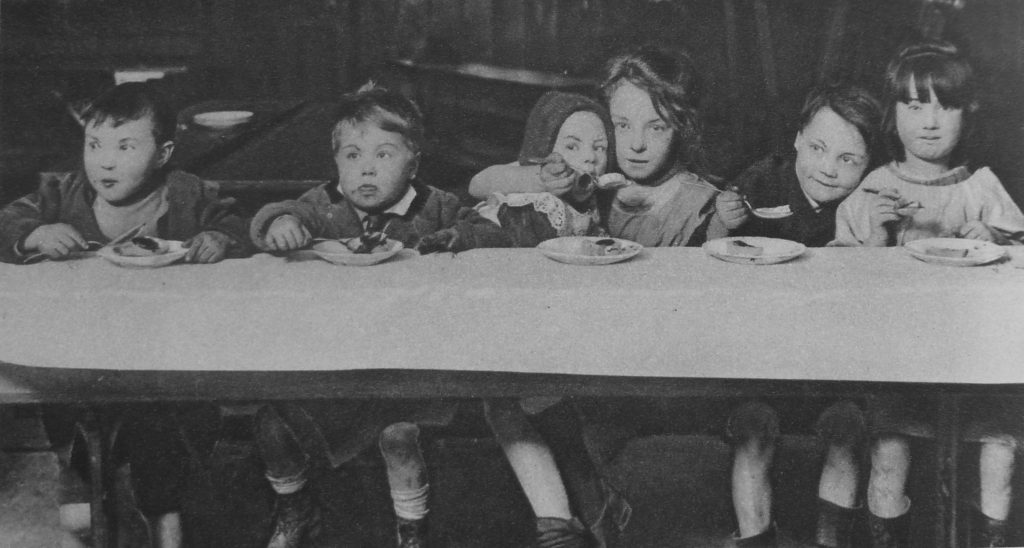
There are many photos in the books which show exactly the same scenes that my father would later photograph. One of these is The Flask in Highgate (see my post on The Flask which can be found here). The caption to the photo reads:
“At The Flask, labourers from the few surviving farms still drink the good ale, as their forerunners did a century ago. This tavern was much frequented by revellers’ clubs of late Georgian times.”
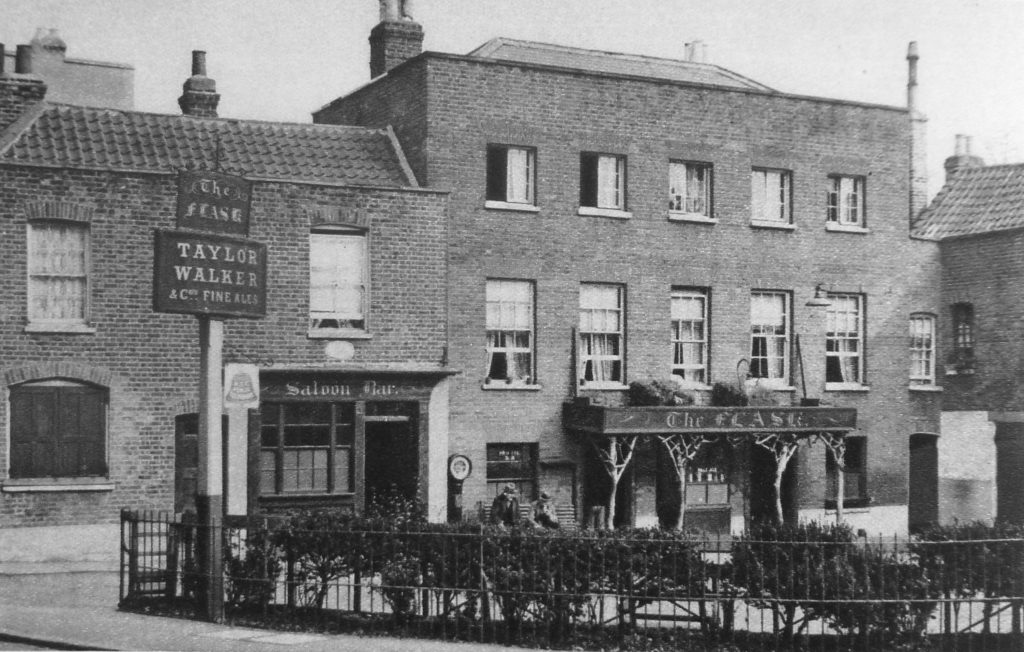
It is interesting that in almost 100 years, aspects of London’s transport system have not really changed. The following photo has the title “Herding Passengers On To A Bus On Ludgate Hill” and the caption starts “Londoners endure a state of perpetual and acute discomfort in the daily travelling to and from their work which is really astonishing.” A sentence that could equally apply today.
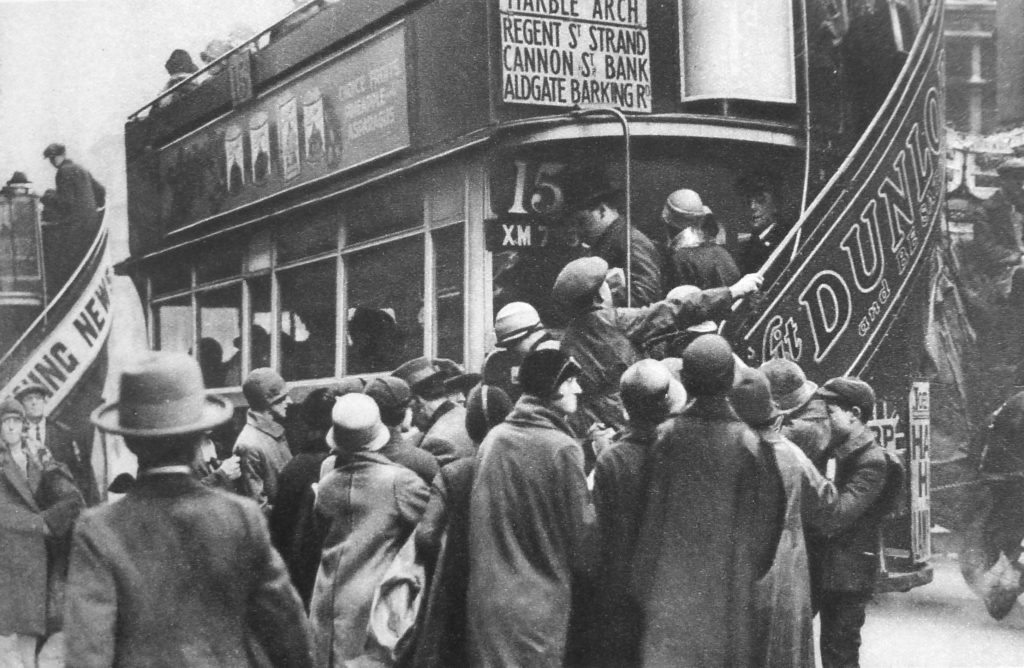
One of the chapters in Wonderful London covers second-hand bookshops and includes the following photo of a second-hand bookshop in Charing Cross Road, which as well as being the home to Foyles (which originally had a second-hand department) also had many other book shops.
Just looking at this photo makes me wonder what treasures could be found in this shop. Had I been around at the time I would probably have spent far too much time and money in shops like this one.

A range of occupations are covered in the three volumes, including the following photo of steeplejacks defying vertigo on the spire of All Saints, Poplar.
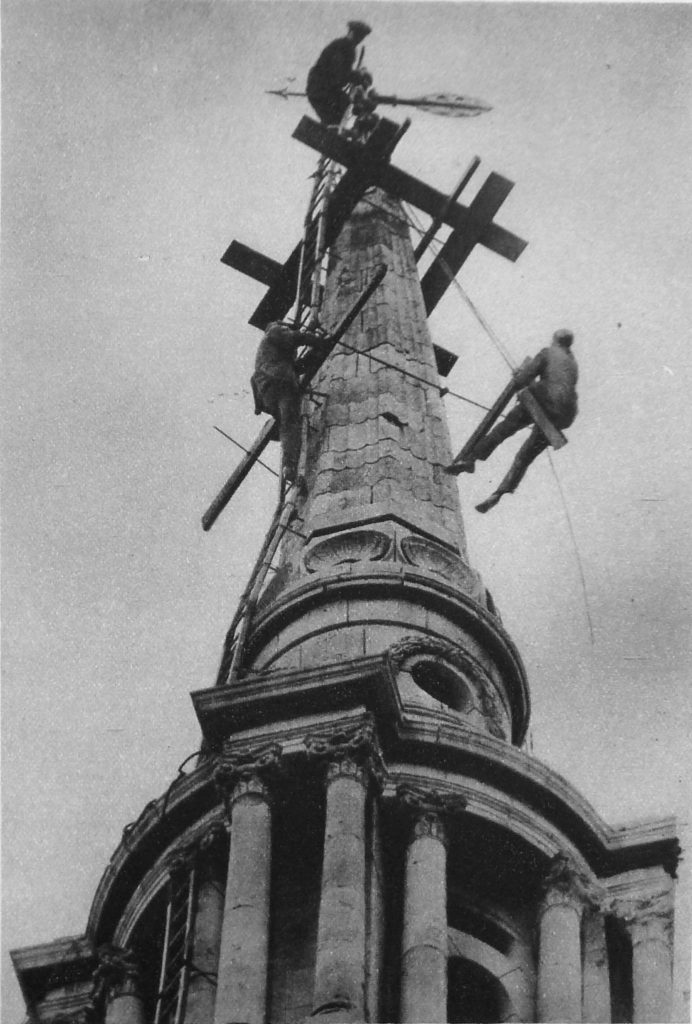
In last weeks post I included a photo taken from the river showing Adelaide House adjacent to London Bridge. Wonderful London includes the following photo of the building soon after completion. The title reads “Adelaide House, A Monument of Modern Architecture On The Site Of Old London Bridge”. The caption to the photo reads:
“In observing this new expression of the architect’s attempt to meet the problems of rebuilding in London it must be remembered that, according to design, a superstructure has yet to be added, and that the bridge level is not the ground level of the building. To get the full height effect, Adelaide House must be viewed from the river or else its south bank. Another place from which to be impressed or perhaps oppressed by the height of the thing is Lower Thames Street. Sir John Burnet and his partners were responsible for the huge study in concrete, and several designs for it were submitted and revised. There is a curious effect about the main entrance as though doorways had shrunk under the tremendous weight above.”
Interesting that the height of buildings has always been an issue in London.

When the telephone was introduced across London, the majority of wiring was above ground. Old photos often show telegraph poles on top of office buildings with wiring strung across the rooftops and streets. These required a good head for heights to maintain. The title for the following photo reads: “Suspending a telephone cable between Conduit and Maddox Streets.”
And has the caption:
Twice a year the steel wires which support London’s telephone cables – each cable may hold the lines of thirty subscribers – are inspected. The cables are fastened to the wires by rawhide suspenders and this man is detaching the thick dark cable from the old wire and fastening it to the new wire, which shows fresh and bright above. The new wire also supports the worker. He sits in a bo’sn’s chair, consisting of a board slung by a loop at either end, which is fastened to the wire. Overhead wires are gradually being superseded by underground systems.”

Some jobs are almost the same now as they were then, for example overnight maintenance work on the city’s railways. The following photo has the caption:
“A gang is at work on the permanent way on Charing Cross Bridge. The lights of the station can be seen in the distance.”

Fog was very much a problem for London in the 1920s. The following photo is titled “Fogbound, Flares For Traffic In A London Particular” and is captioned:
“When the minute particles of dust which are always overhanging London become coated with moisture and the temperature falls below what is called dew point, that is when the temperature at which the moisture in the atmosphere condenses, fog blankets the streets. It is one of the scourges of the city, and much time and money are lost annually by its delaying the traffic. In a real pea-souper acetylene flares are placed at traffic control points. In the photo a constable is directing traffic where Charing Cross meets Trafalgar Square.”
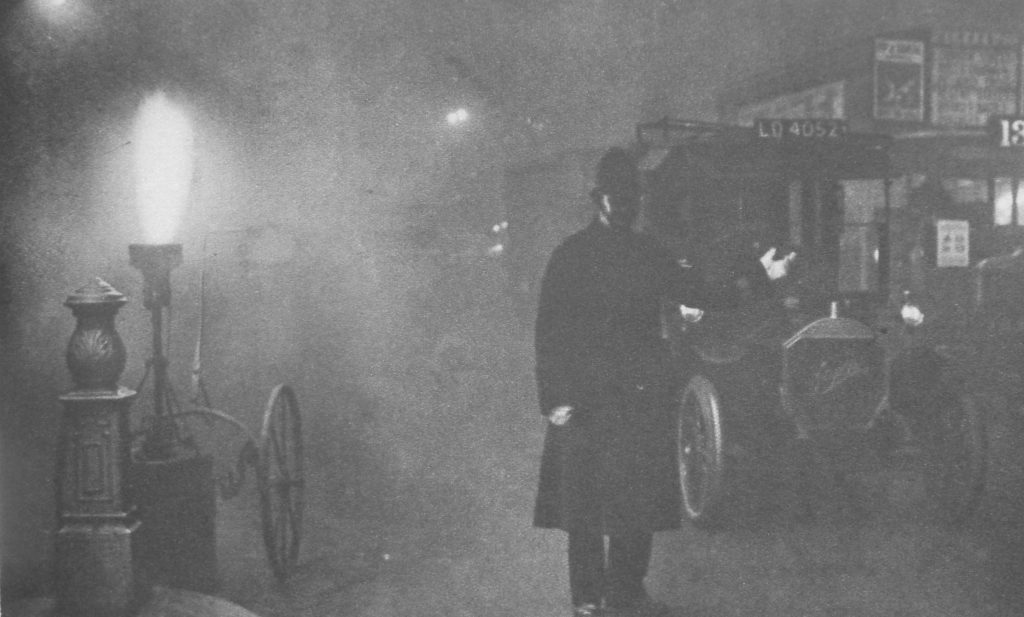
Interesting that the caption refers to the time and money lost due to London fogs rather than the impact on the health of Londoners. Business, trade and making money has always been the main driver of London life.
I covered the cannon in frount of the Tower of London in a post showing my father’s 1947 photo of the area. Wonderful London includes a photo of the same area from the 1920s with the title “Tower Wharf: One Of London’s Lunch-Time Gathering Grounds” and the caption:
“Despite the tremendous number and variety of eating places, many hundreds of those who work in the City and its surroundings prefer, in fine weather, to eat their lunch on a park seat or as here, seated on the slippery surface of an old cannon. Tower Wharf, whatever its merits as a restaurant, is a fine place to view the Tower, and also the shipping in the Upper Pool and the opening of Tower Bridge. The wharf was built by Henry III who also made Traitors Gate. The wharf gave the fortress one more line of protection. On the very ground where this crowd is sitting another crowd assembled day after day to scream for the trembling Judge Jeffryes to be thrown to them, in quittance for the Bloody Assize.”

A theme during the 1920s was the growth in motorised traffic across London and the need to manage traffic. This required new systems of control and in 1925 manually operated traffic lights were installed at the junction of St. Jame’s Street and Piccadilly.
The photo below shows the junction. Look in the middle of the photo and there is a small hut.

Within this hut is the control equipment for the traffic lights. Operated manually by the levers at the bottom of the photo with the street layout and indicators showing the status of the traffic lights above. Requiring an operator for each set of traffic lights, it is no wonder that they only really started to proliferate across London when automated lights were developed a few years later.

The book also features trades that have long since disappeared. Tanneries were a major industry in 19th century London but in the first decades of the 20th century they were gradually disappearing. The following photo shows one of the remaining tanneries and is captioned:
“At Bermondsey tanning is, so to speak, in the air as one traverses the dingy streets towards the Neckinger Mills, where the photograph was taken. We are looking at the lime yard full of pits about seven feet deep, and built some 60 or 70 years ago. Fifteen to thirty dozen skins go to a ‘pack’ and each pack is soaked in fresh water, then in a solution of limewater, for 3 – 6 weeks to remove the hair. Goat skins are being dealt with here.”

Radio broadcasting, or wireless was a new technology in the 1920s with the BBC having started daily broadcasts in 1922. Wonderful London shows how this technology is starting to impact the lives of Londoners with two photos under the title: “Broadcasting Noises From The Zoo To The Aerials Of Suburbia”
The photos are captioned:
“Howling is only approved of by ‘listeners-in’ when it comes from the Zoo, and several experiments have been made in bringing the wild animal into the home by wireless. We see the officials of the British Broadcasting Co. preparing to receive a few screeches from the aviary.”

“These will be wafted over the forest of wireless poles that has sprung up all over London since the broadcasting craze took its hold on the inhabitants. The poorer neighbourhoods seem particularly to bristle with aerial poles, and this is very noticeable from a train traversing such districts.”

As well as radio providing a new means of communication and entertainment another new technology that started to be widely available and continues to have a huge impact on London is flight.
Long before Heathrow or Gatwick, Croydon was London’s airport, and the following photos show the first steps in London’s aviation journey. The first photo is titled “The Air Port of London As It Was In 1925” and is captioned:
“The official designation of the great aerodrome is “The Air Port Of London” though it is popularly known as the Croydon, or Waddon aerodrome for it is included in the latter parish”
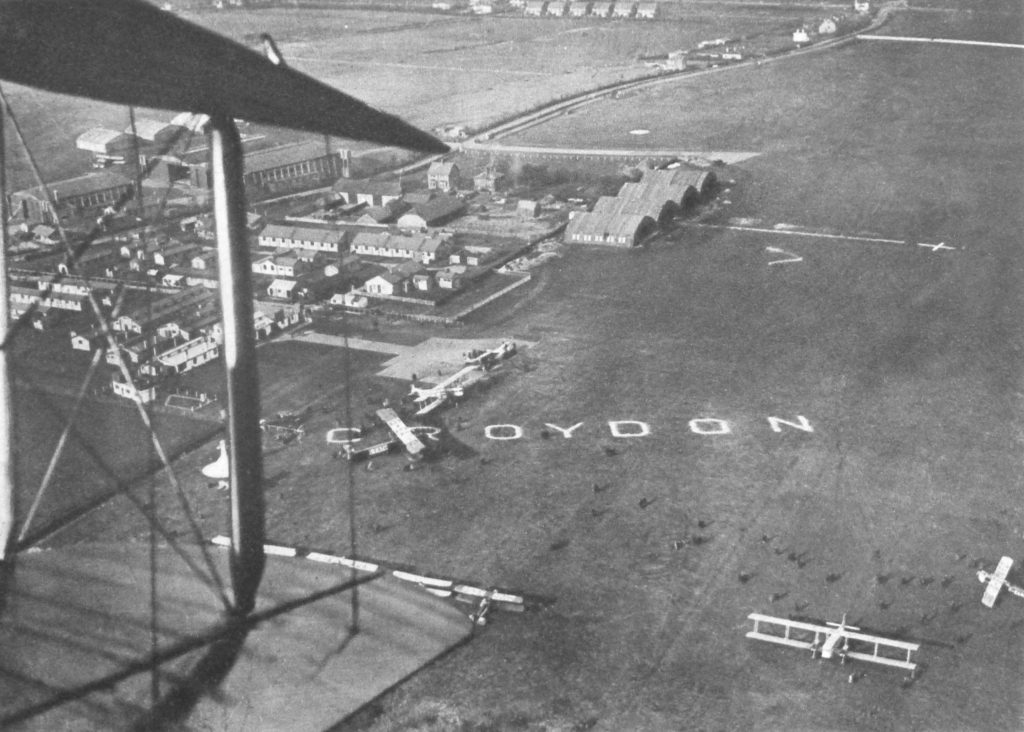
And the following photo “Loading Cargo and Passengers”
“Passengers are embarking for Paris by an Imperials Airways machine.”

When you consider how quickly these first tentative steps in commercial aviation transformed into the scale and complexity that we now see at Heathrow, it does make you wonder what the next 90 years will hold for London.
Wonderful London does live up to its name and with the written chapters that cover almost any topic you could think off, and with so many photos the books really do justice to describing the world’s greatest city.
alondoninheritance,com



